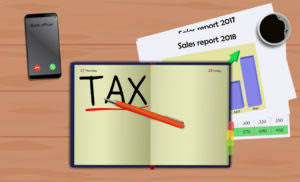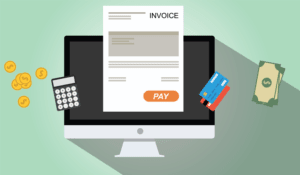
As technology continues to evolve, encumbrance accounting systems and software will become more sophisticated, offering organizations increased automation and improved accuracy. These advancements will streamline the encumbrance accounting process, allowing for more efficient tracking of future payments and expenses. To use the full capabilities of encumbrance accounting, you must enable the budgetary control flag for a ledger. When you enable the budgetary control flag, the system automatically creates encumbrances from requisitions, purchase orders and other transactions originating in feeder systems such as Purchasing and Payables. Throughout this article, we have explored the definition of encumbrance accounting and its significance in financial operations. We have discussed the various types of encumbrances, the process of recording and reporting encumbrances, and provided practical examples to illustrate their application in real-world scenarios.
Reviewing Encumbrances
Implementing the correct AP automation solution to automate your financial processes and ensure each encumbrance is accounted for without increasing your accountants’ manual workload is essential. This aids your accountants in timely book closing and adding journal entries when an encumbrance has been paid. Lastly, the future of encumbrance accounting is likely to involve the integration of encumbrance data with other financial management systems. By combining encumbrance accounting with budgeting, forecasting, and reporting tools, organizations can gain a holistic view of their finances and make more strategic decisions. Integrated systems can automate data flow between different modules, reducing the risk of errors and providing a seamless user experience. One of the key trends in encumbrance accounting is the integration of artificial intelligence (AI) and machine learning capabilities.

General Ledger
- This mitigates the risk of insufficient funds and also enables organisations to take advantage of opportunities by having resources readily available.
- This includes defining roles and responsibilities, establishing approval processes for purchase requisitions and purchase orders, and implementing regular audits to ensure compliance and accuracy.
- Encumbrances are accounted for in the balance sheet as reserved fund balances and can be adjusted or carried forward at the end of a financial year.
- When you choose an amount type of YTDE, you can view cumulative amounts so the February balances will include the $40 available for January.
In government accounting, for instance, encumbrances are leveled against the relevant appropriation account and are often used when there are multi-year contracts in place. When the money is paid out, the bookkeeper zeros out the encumbrance account and reports the money as a paid expense. Open encumbrances record the encumbrance accounting amount to be reserved from the unencumbered balance that is remaining to honor the commitments. An encumbrance refers to restricted funds inside an account that are reserved for a specific debt or liability in the future. A property becomes encumbered once it has a lien on it, or when there are zoning restrictions.
Better Financial Planning
Once you have identified the financial commitments and created the encumbrance accounts, record the encumbrances in your accounting system. Enter the necessary information for each commitment, such as the amount, description, and expected fulfillment date. Be sure to allocate the encumbrance to the appropriate account and ensure accurate tracking.
Or it may be a financial lien placed by someone owed money for work they did for the previous owner, that wasn’t paid. Or it might be a zoning regulation that prohibits you from building a structure you’d hoped to have. Be sure to research all possible encumbrances before you purchase a home so you understand how you might be obligated financially or otherwise. The first step in recording encumbrances is to identify and document all financial commitments. This can include purchase orders, contracts, or any other obligations that have not yet been fulfilled. It is crucial to gather all the necessary information, such as the amount, description, and expected fulfillment date, for each commitment.

- By accurately recording and tracking financial commitments, businesses can effectively plan their budgets, allocate resources, and maintain financial control.
- Various governments have adopted encumbrance accounting, nonprofits and some companies to handle sensitive finances better.
- Manual encumbrance lines are made on the general ledger, most commonly after a purchase requisition process.
- Encumbrances are also known as pre-expenditures since they act as budgeted reserve funds before the actual expenditure.
- When your analysis is more precise, your estimated cash outflow will reflect your company’s position more truly.
- Encumbrance or commitment accounting is the process of accounting for and setting aside funds for future expenses that are yet to be paid.
Property owners may be encumbered from exercising full—that is, unencumbered—control over their property. In some cases, the property can be repossessed by a creditor or seized by a government. As an accounting term, “encumbrance” refers to restricted funds inside an account that are reserved for a specific liability. While both encumbrances and accruals involve recognising financial events before cash transactions have happened, they serve different purposes.
- Verify purchase order transactions so you can see what encumbrances materialized into actual paid expenses.
- The lender, generally a bank, retains an interest in the title to a house until the mortgage is paid off.
- By making visible the amount of money you plan on spending in the future, you can more accurately see how much money you can spend on future projects or purchases without going over budget.
- Overall, it is essential to recognize the strengths and weaknesses of encumbrance accounting and adapt the practices to suit the specific needs and circumstances of the organization.
- An encumbrance can impact the transferability of the property and restrict its free use until the encumbrance is lifted.
- This blog will discuss the importance of encumbrance accounting and how it is performed.
Increased transparency
Presenting committed funds in financial statements provides a more complete picture of both current and anticipated financial responsibilities. It’s then automatically sent to the department head and anyone else who must approve https://www.bookstime.com/ the purchase based on the approval workflow rules and thresholds that have been set up in the Planergy system. In this document, the IT department can list the equipment they want to purchase and the vendor they intend to use.
Encumbrance Accounting Journal Entries
The encumbrance concept is also used in real estate, where it is a claim against a property. These encumbrances can usually be found in the records of the local county recorder or land records office. An encumbrance can also restrict the uses to which property can be put, such as zoning laws that limit the types of construction on a plot of land. You can review the cumulative funds available total only by selecting Year-to-Date Extended (or Project-to-Date) as the amount type. For example, if you budget $100 for January, spend $50 and have $10 in encumbrances, the funds available for January is $40.

Benefits of Encumbrance Accounting
Before we journey into the intricacies of encumbrance accounting, we must grasp the foundational concept of an “encumbrance” itself. It is difficult to transfer an encumbered property, so the property owner has a strong incentive to settle the underlying claim. Requisition encumbrances are automatically relieved when requisitions become purchase orders. You can review your posted or unposted encumbrance journal batches, such as those created manually or those imported from Payables or Purchasing. Enter and update encumbrance entries, as well as review and update encumbrance entries imported to General Ledger from feeder systems such as Purchasing and Payables. An encumbrance is a claim or right held by someone other than a property owner that can affect how someone might use the property as well as their ability to sell it.
Monitor and Adjust Encumbrances
By allocating funds in advance, and creating encumbrances, organisations can minimise the risk of unintentional overspending. Anticipating future expenses allows for better allocation of resources by ensuring that funds are available when needed. Once the invoice has been received or paid, the original encumbrance transaction is reversed, and the expense is recorded as normal. Encumbrances are recorded in the accounting ledger as a transaction to the encumbrance account.